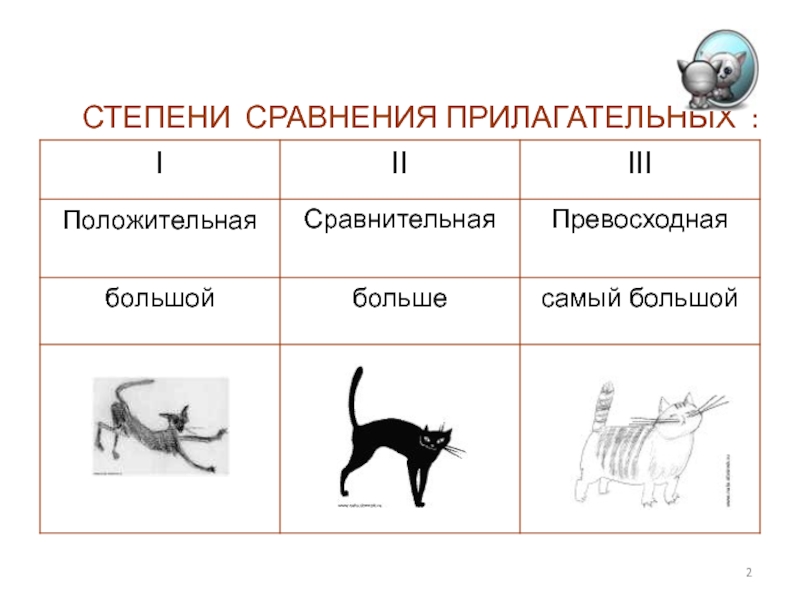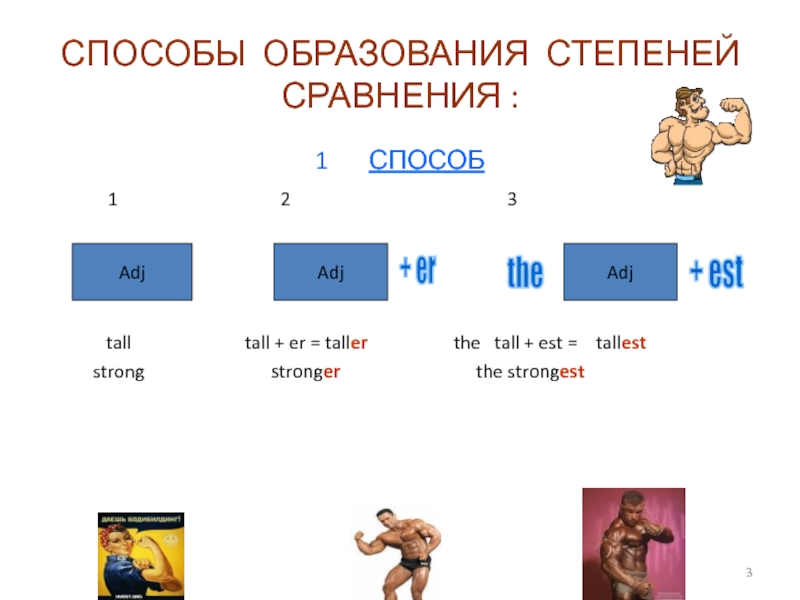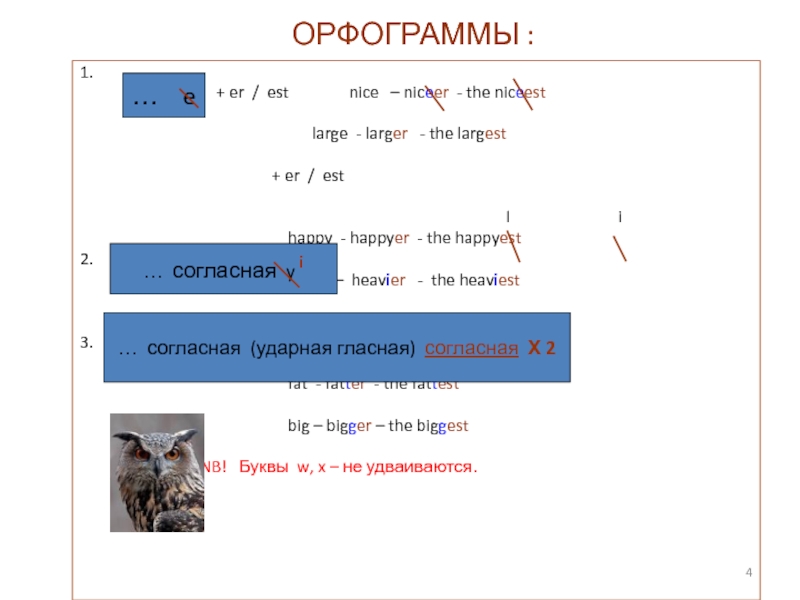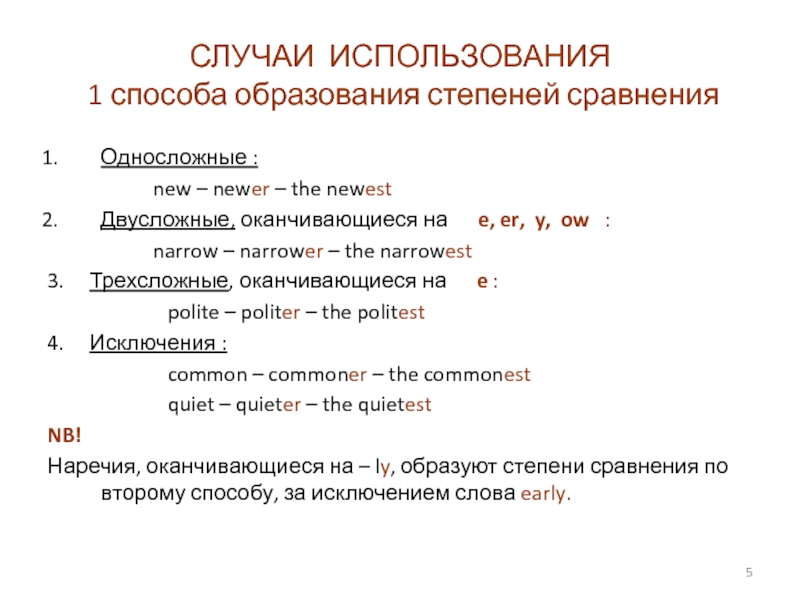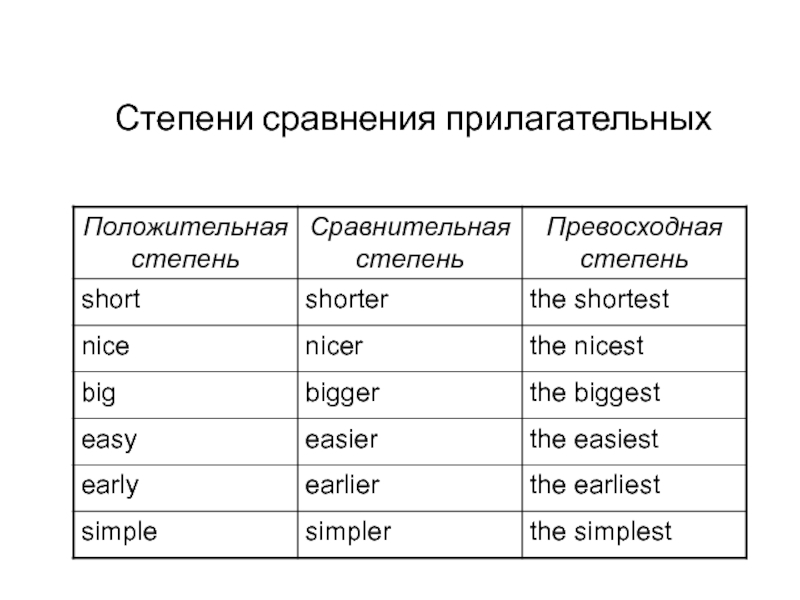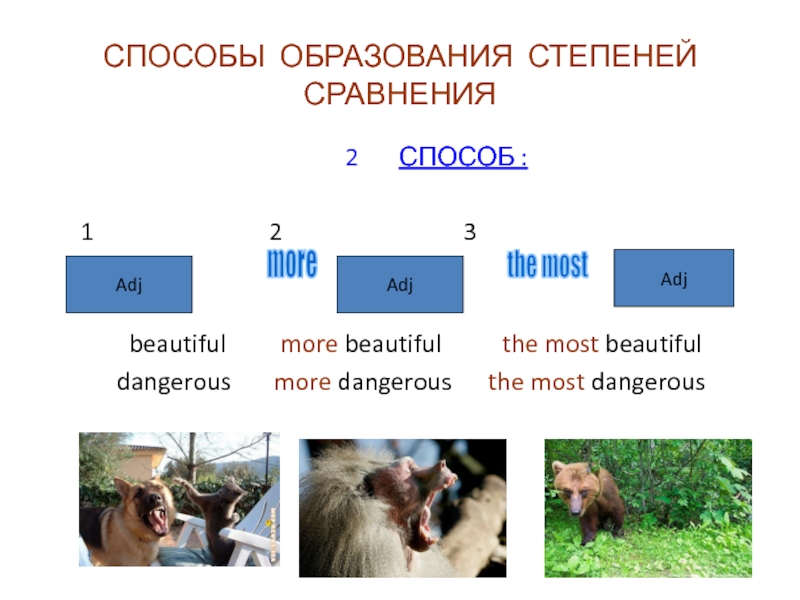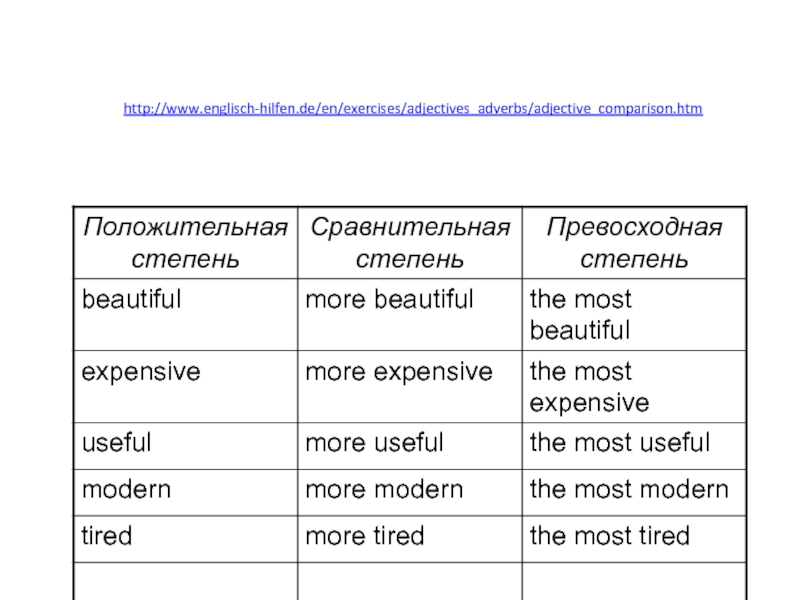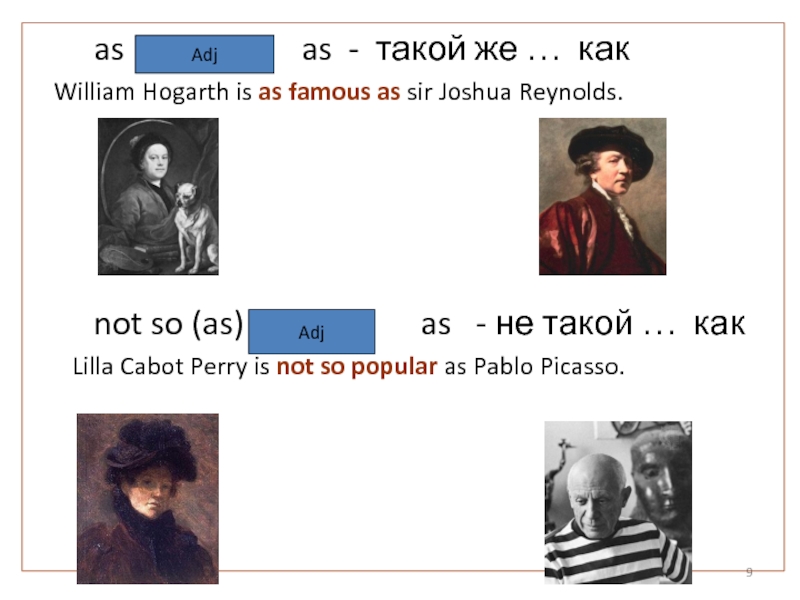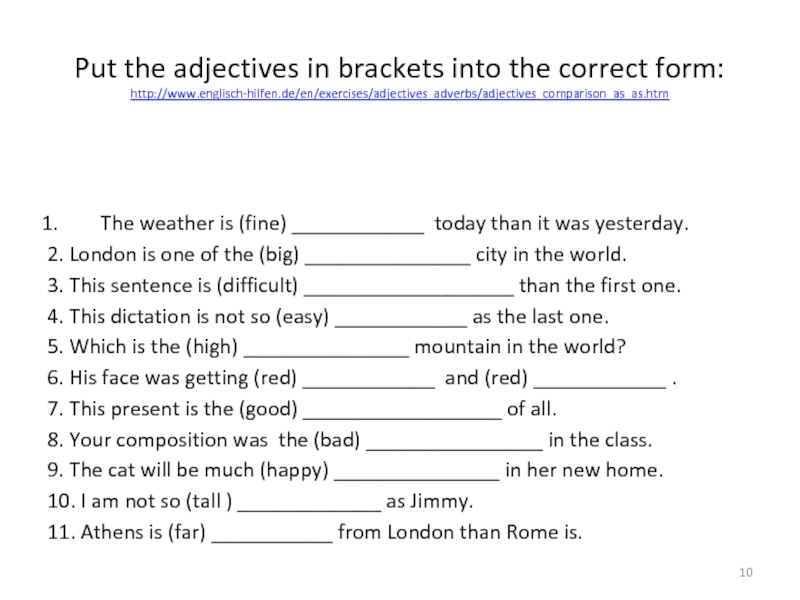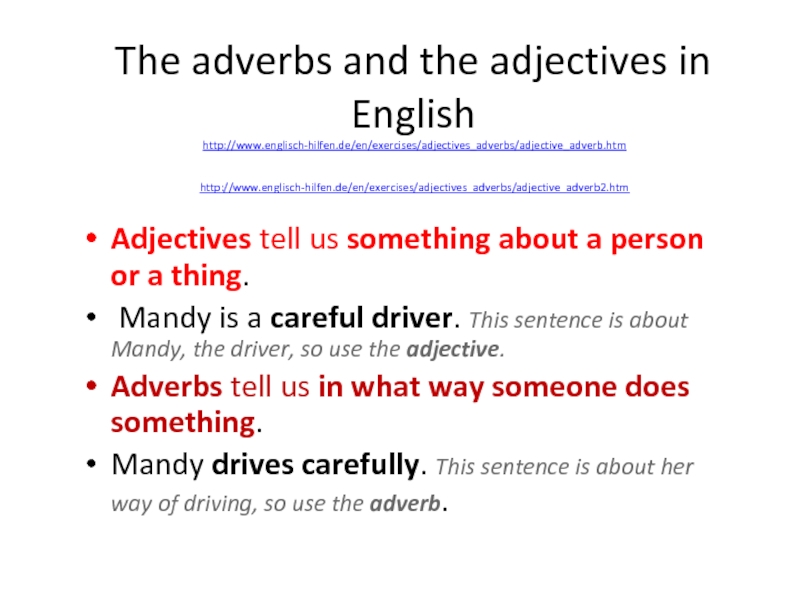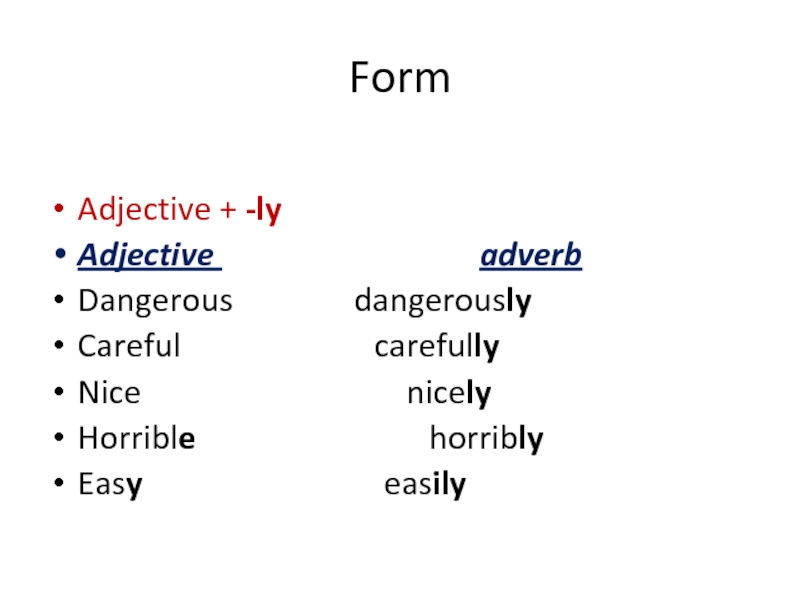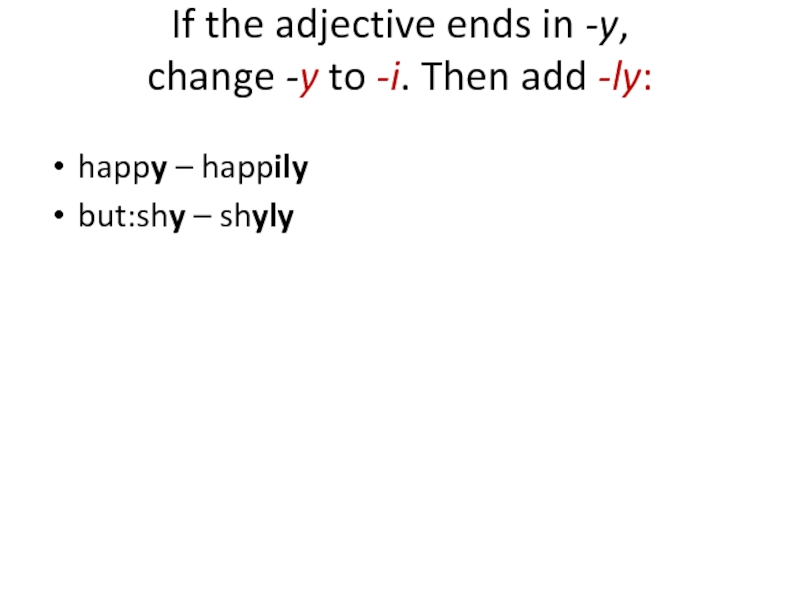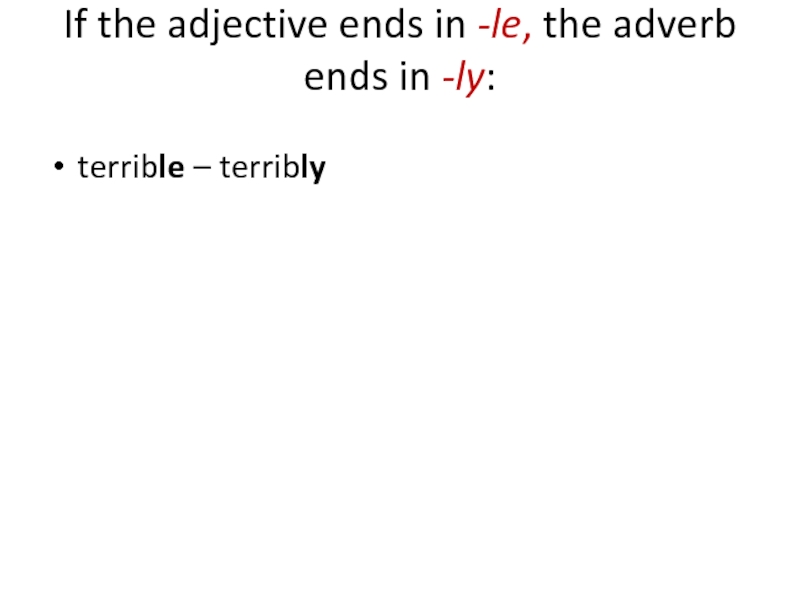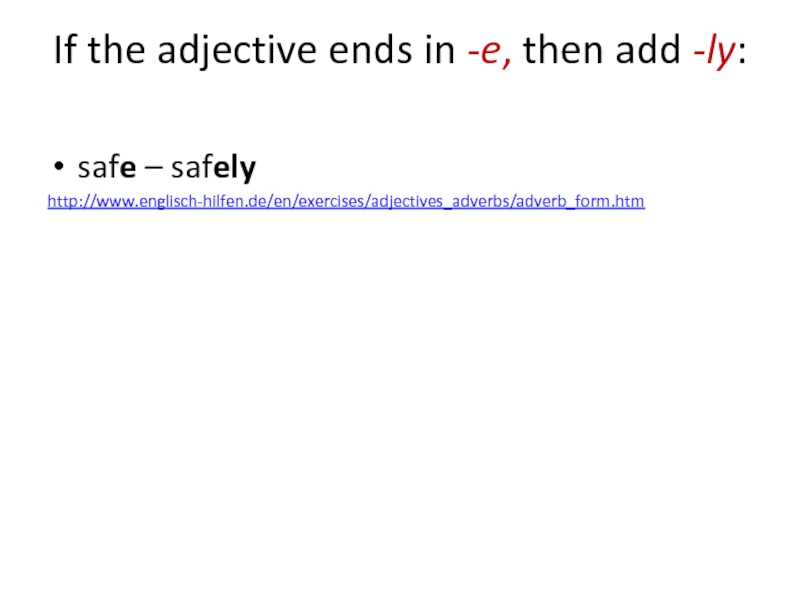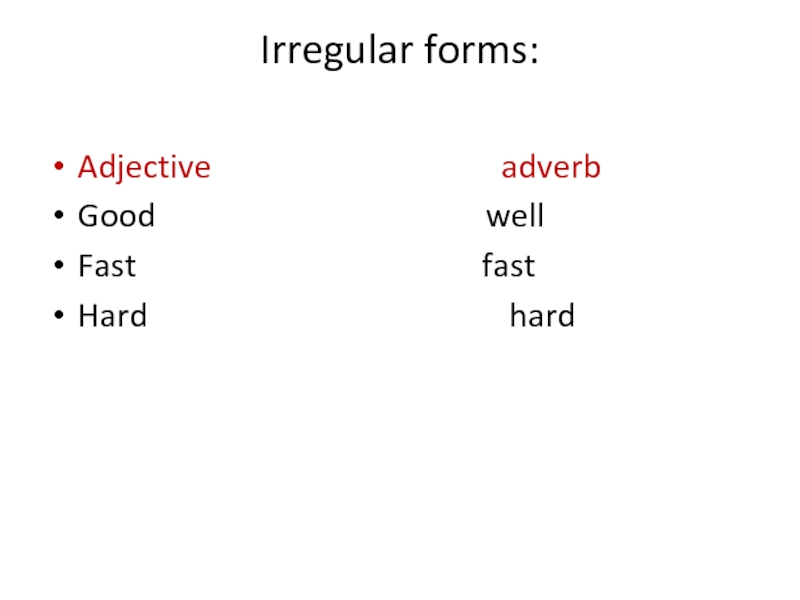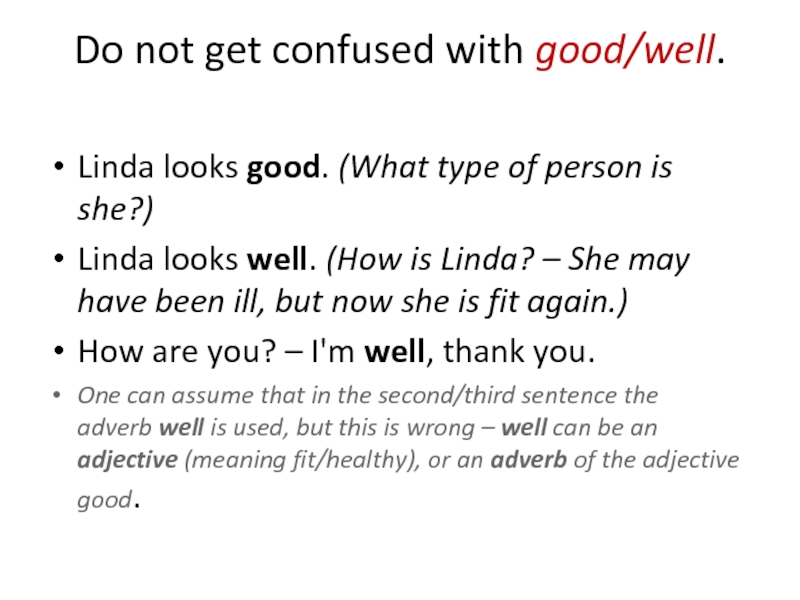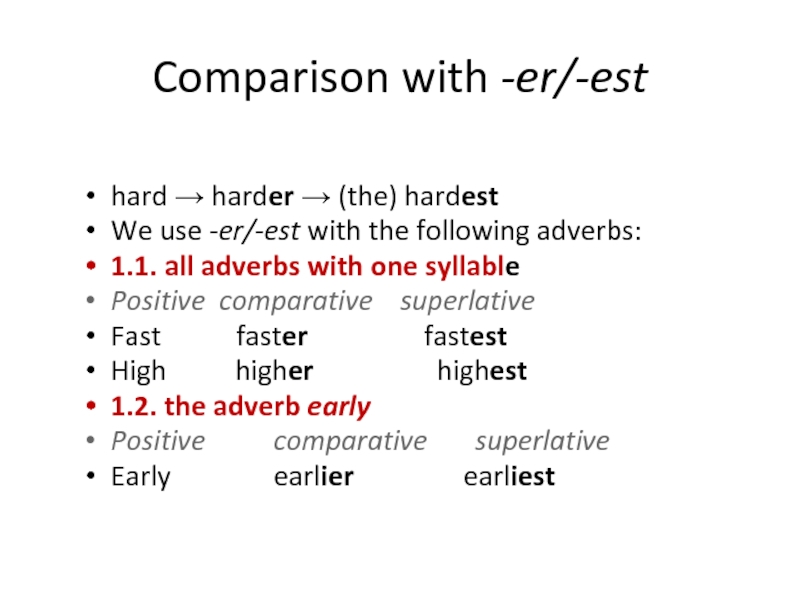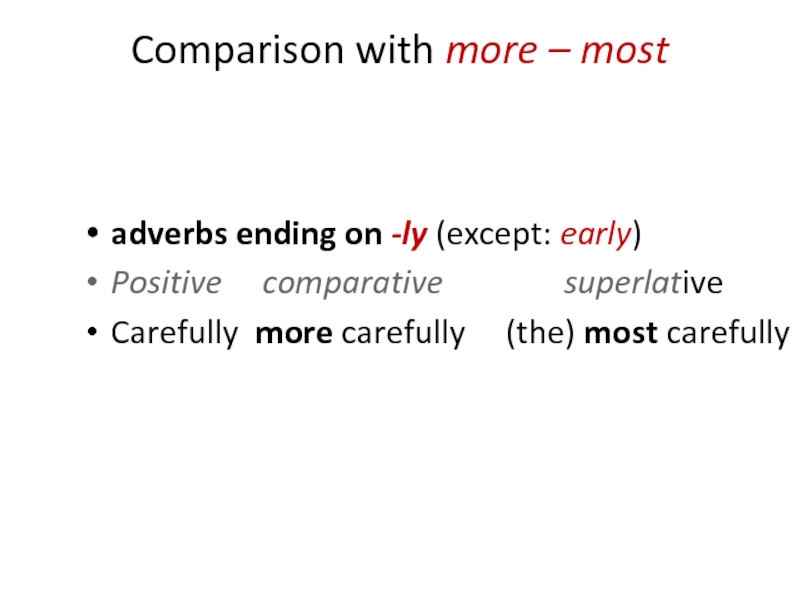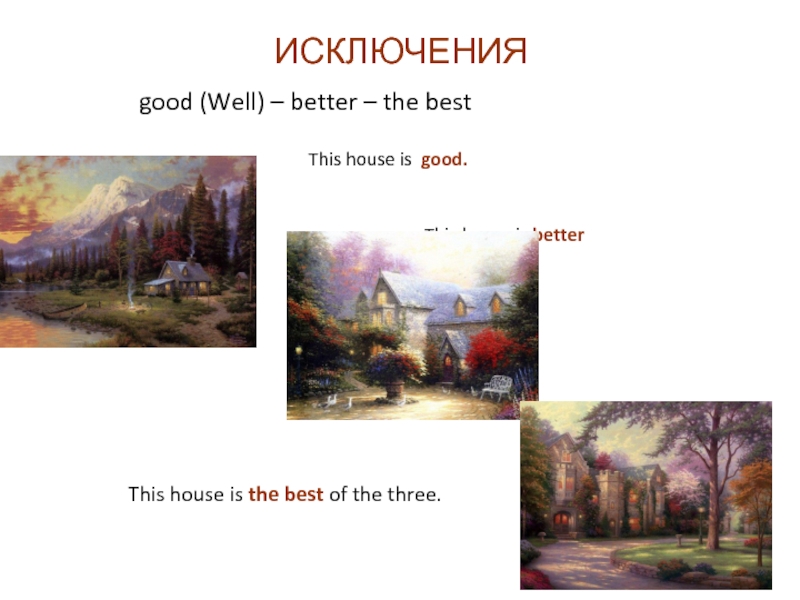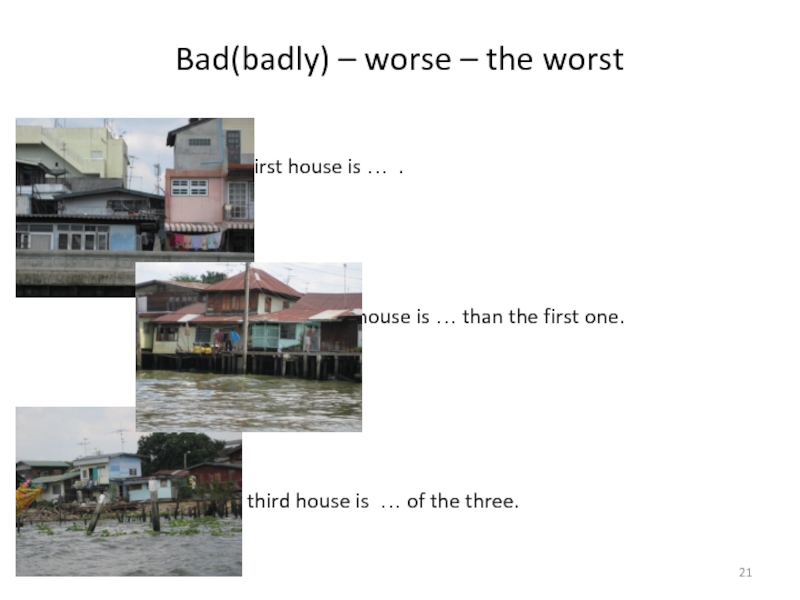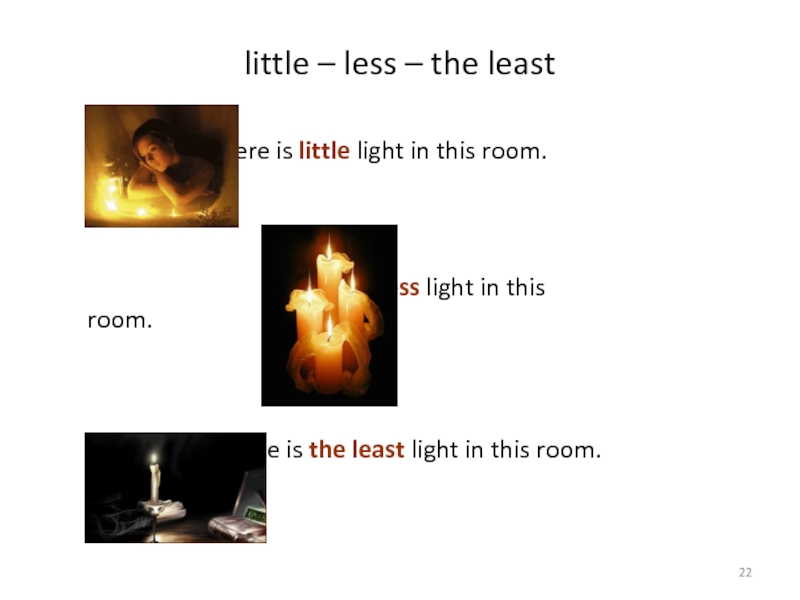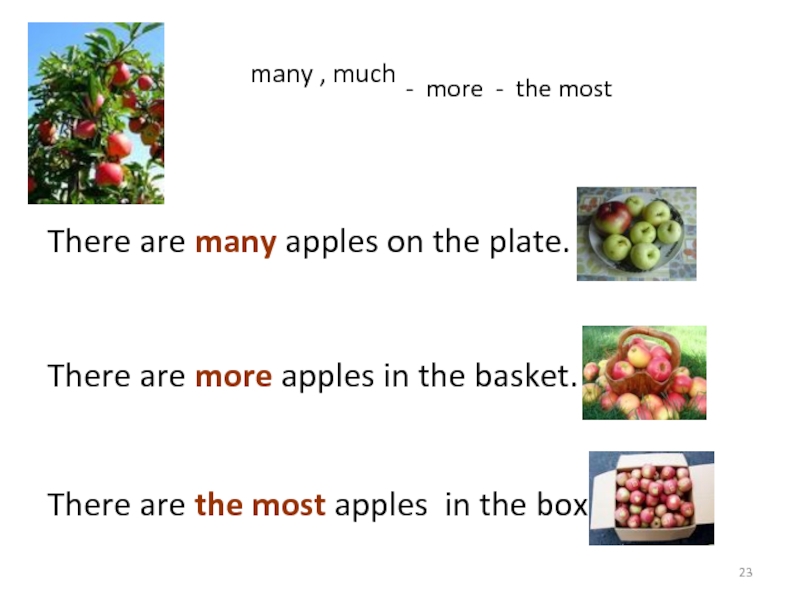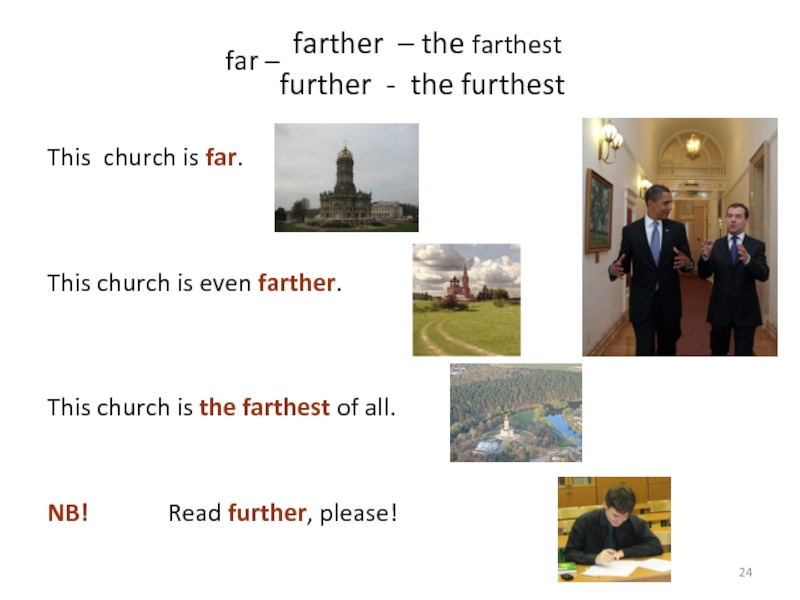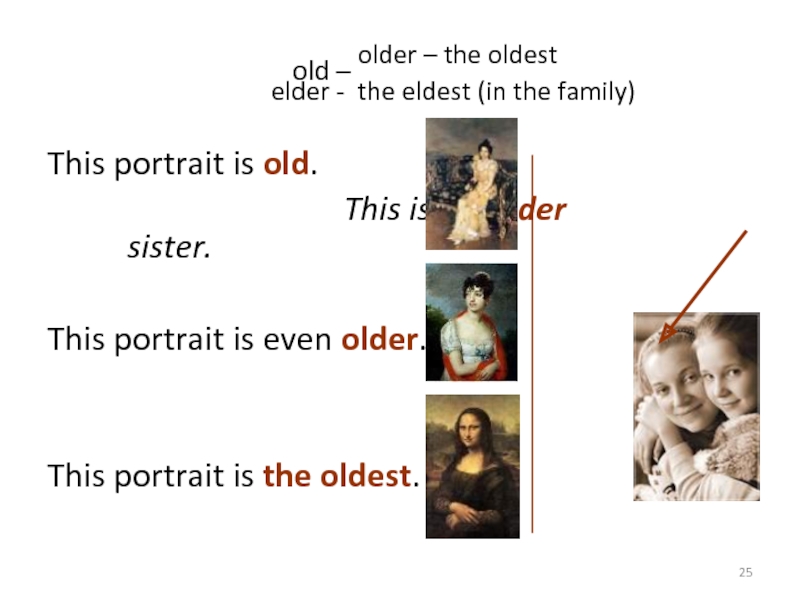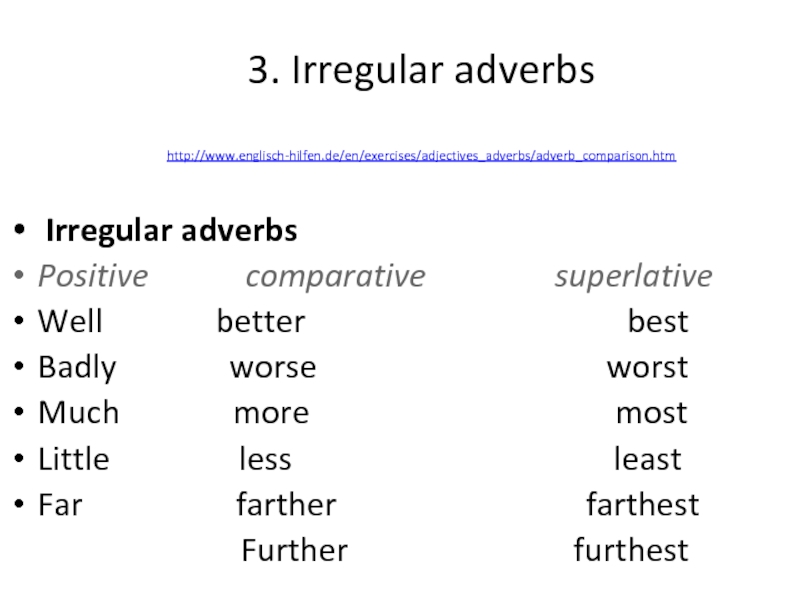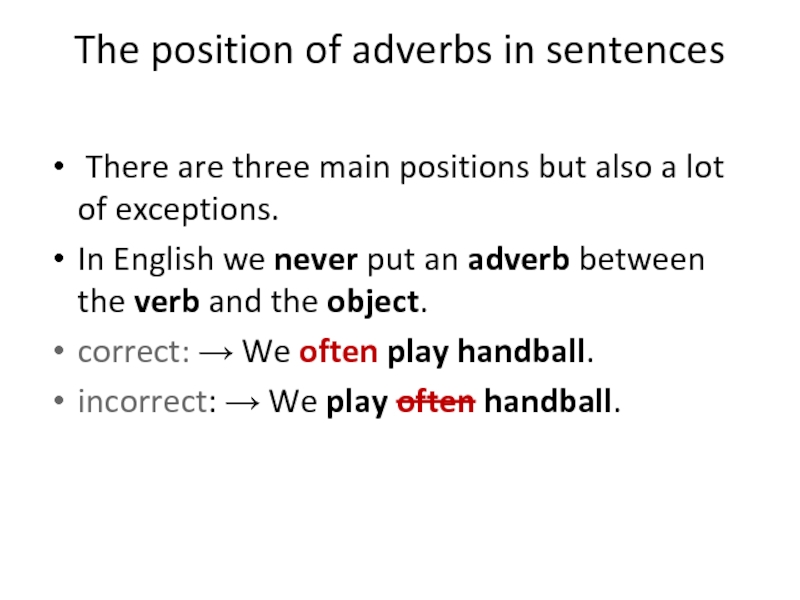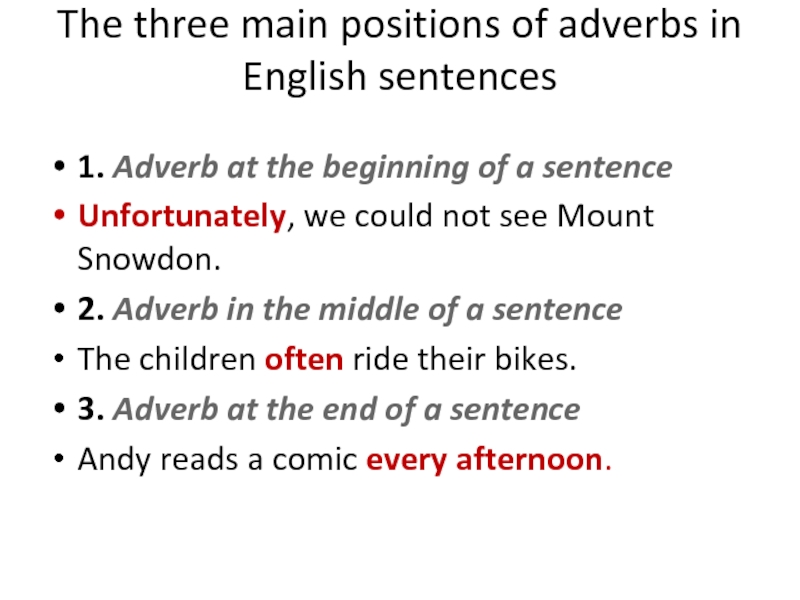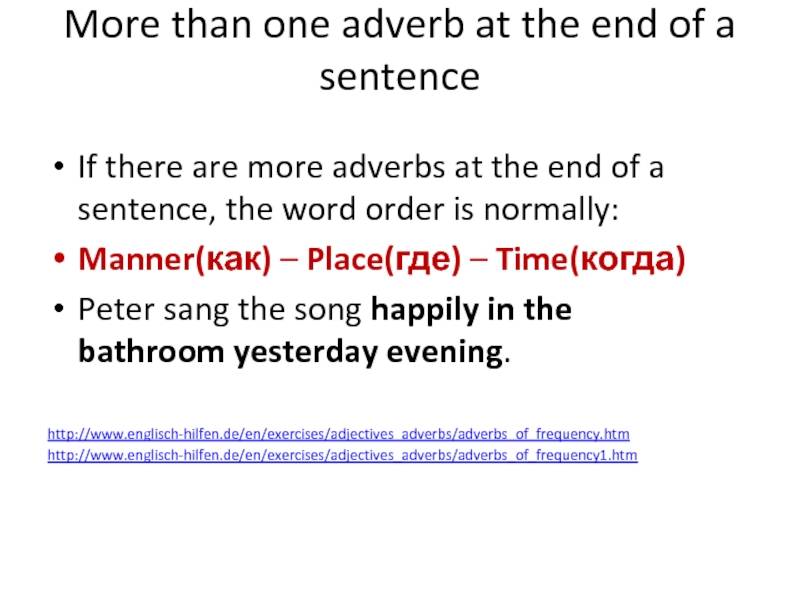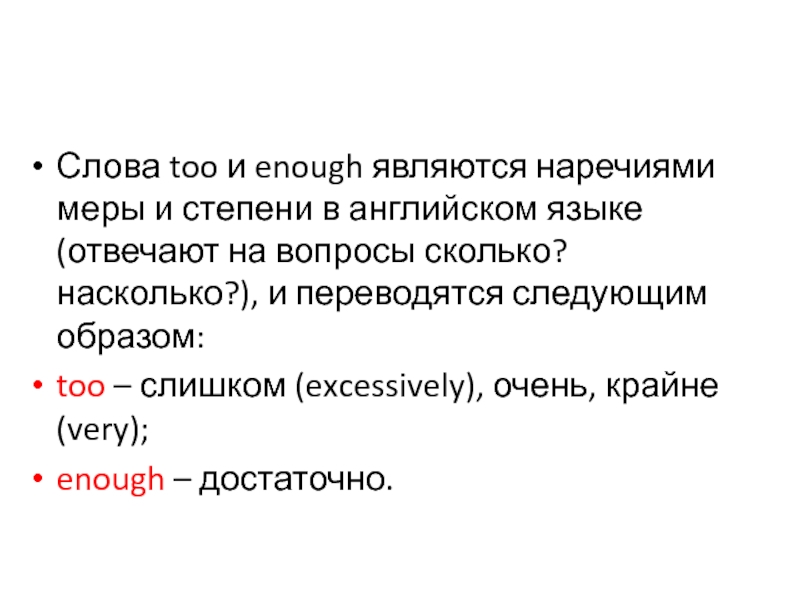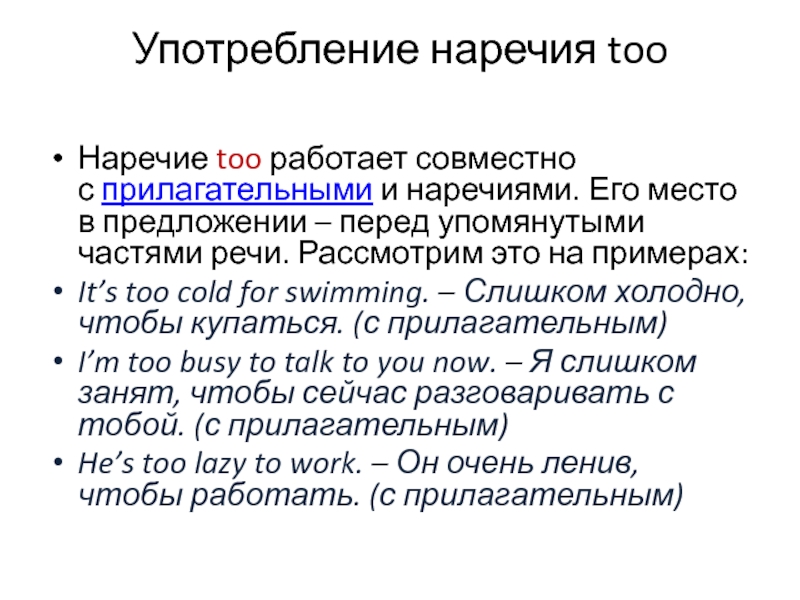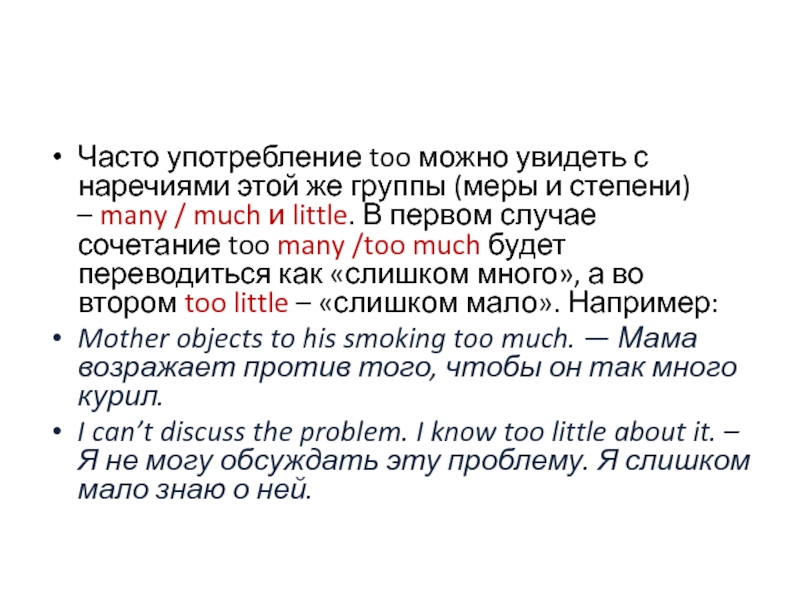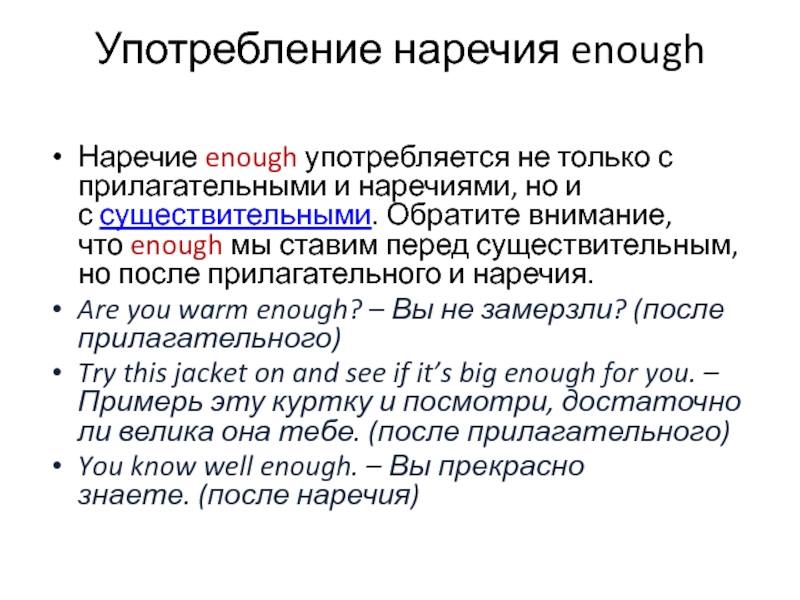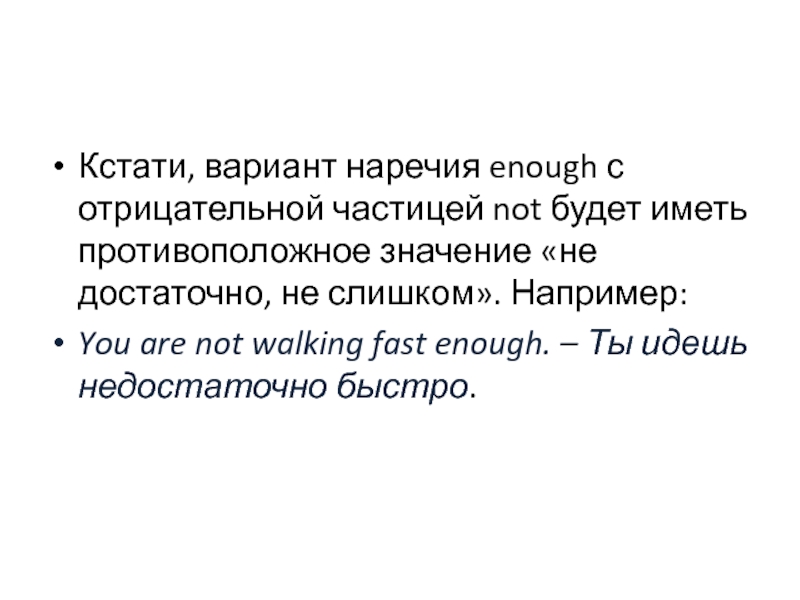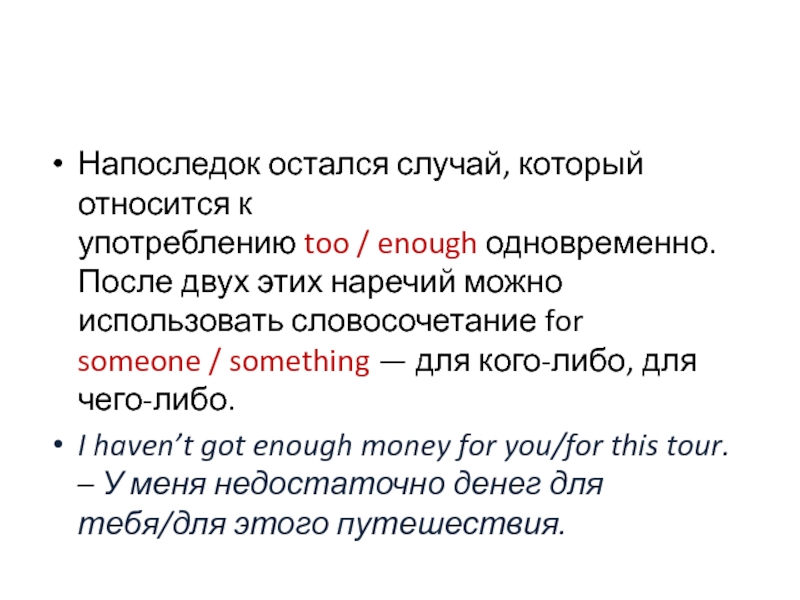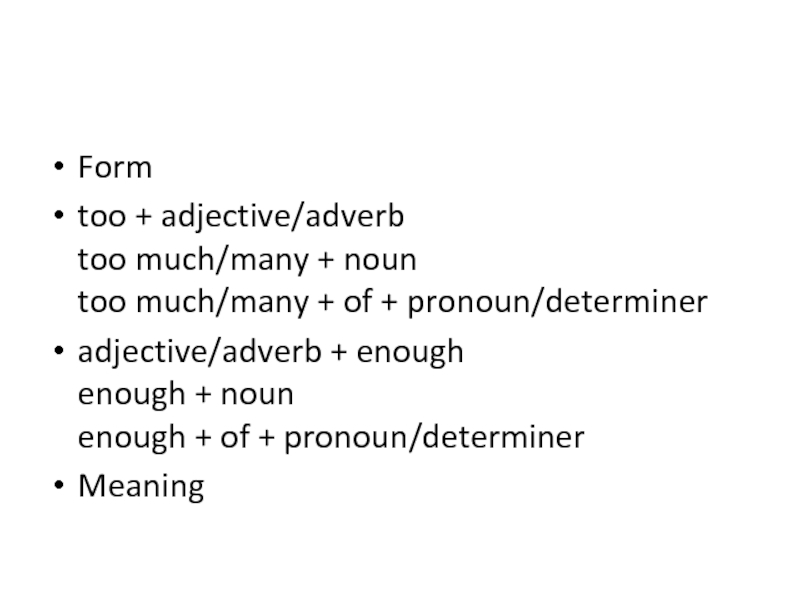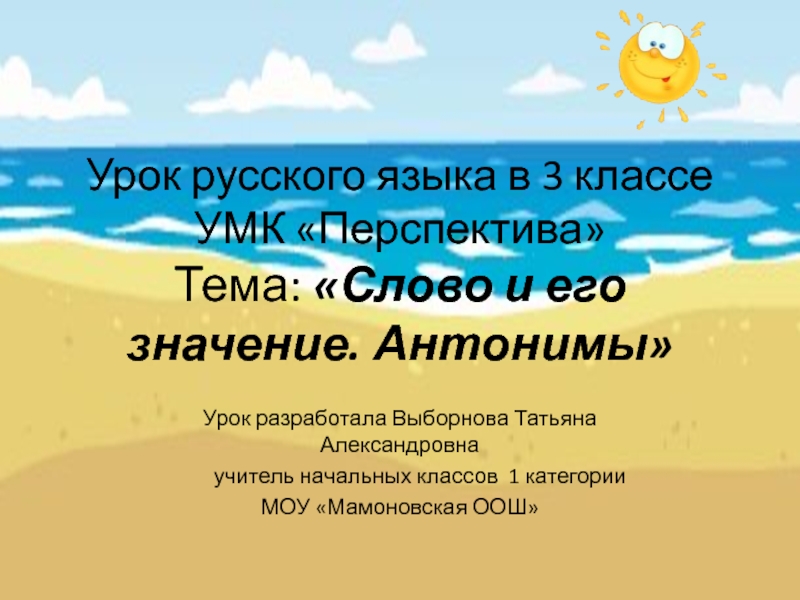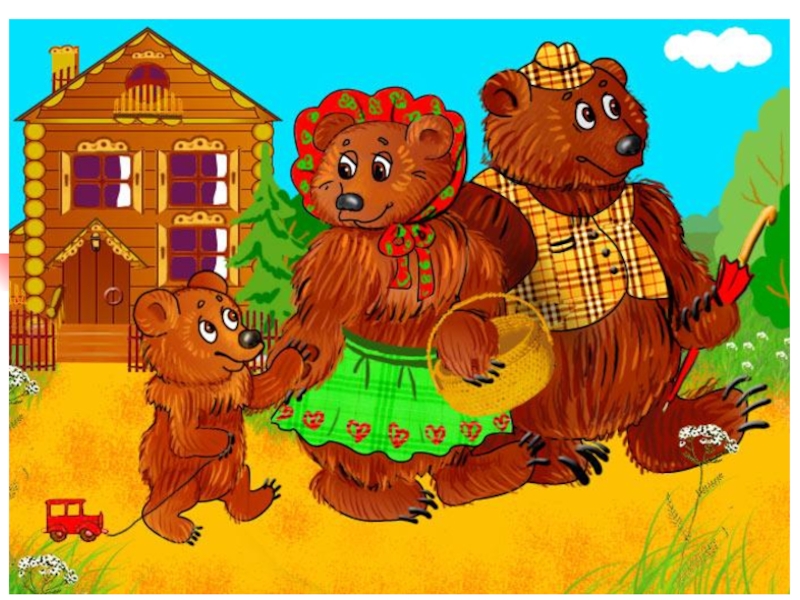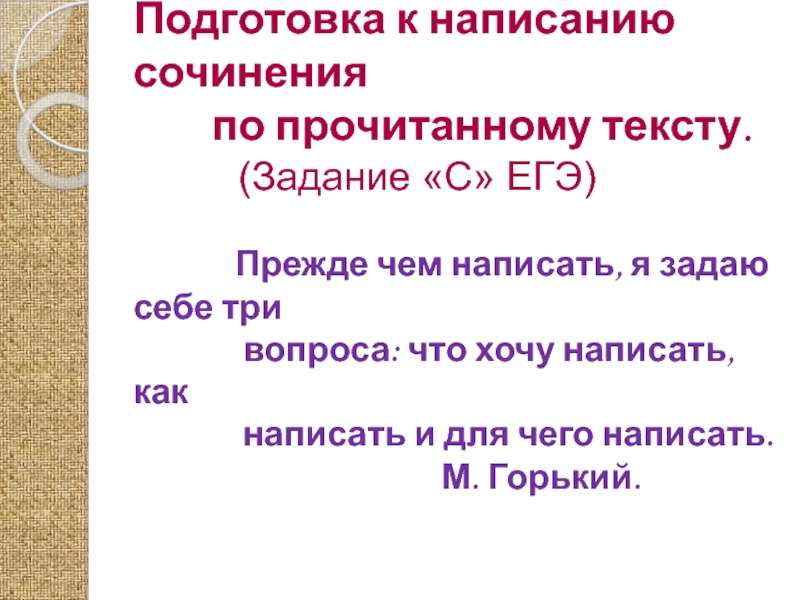- Главная
- Разное
- Дизайн
- Бизнес и предпринимательство
- Аналитика
- Образование
- Развлечения
- Красота и здоровье
- Финансы
- Государство
- Путешествия
- Спорт
- Недвижимость
- Армия
- Графика
- Культурология
- Еда и кулинария
- Лингвистика
- Английский язык
- Астрономия
- Алгебра
- Биология
- География
- Детские презентации
- Информатика
- История
- Литература
- Маркетинг
- Математика
- Медицина
- Менеджмент
- Музыка
- МХК
- Немецкий язык
- ОБЖ
- Обществознание
- Окружающий мир
- Педагогика
- Русский язык
- Технология
- Физика
- Философия
- Химия
- Шаблоны, картинки для презентаций
- Экология
- Экономика
- Юриспруденция
Прилагательные и наречия(степени сравнения) презентация
Содержание
- 1. Прилагательные и наречия(степени сравнения)
- 2. СТЕПЕНИ СРАВНЕНИЯ ПРИЛАГАТЕЛЬНЫХ :
- 3. СПОСОБЫ ОБРАЗОВАНИЯ СТЕПЕНЕЙ СРАВНЕНИЯ : СПОСОБ
- 4. ОРФОГРАММЫ : 1.
- 5. СЛУЧАИ ИСПОЛЬЗОВАНИЯ 1 способа образования степеней
- 6. Степени сравнения прилагательных
- 7. СПОСОБЫ ОБРАЗОВАНИЯ СТЕПЕНЕЙ СРАВНЕНИЯ СПОСОБ :
- 8. http://www.englisch-hilfen.de/en/exercises/adjectives_adverbs/adjective_comparison.htm
- 9. as
- 10. Put the adjectives in brackets into the
- 11. The adverbs and the adjectives in English
- 12. Form Adjective + -ly Adjective
- 13. If the adjective ends in -y, change -y to -i. Then add -ly: happy – happily but:shy – shyly
- 14. If the adjective ends in -le, the adverb ends in -ly: terrible – terribly
- 15. If the adjective ends in -e, then add -ly: safe – safely http://www.englisch-hilfen.de/en/exercises/adjectives_adverbs/adverb_form.htm
- 16. Irregular forms: Adjective
- 17. Do not get confused with good/well. Linda
- 18. Comparison with -er/-est hard → harder → (the)
- 19. Comparison with more – most adverbs ending
- 20. ИСКЛЮЧЕНИЯ
- 21. Bad(badly) – worse – the worst The
- 22. little – less – the least
- 23. many , much - more - the
- 24. far – farther – the farthest
- 25. old – older – the oldest
- 26. 3. Irregular adverbs http://www.englisch-hilfen.de/en/exercises/adjectives_adverbs/adverb_comparison.htm Irregular
- 27. The position of adverbs in sentences
- 28. The three main positions of adverbs in
- 29. More than one adverb at the end
- 30. TOO/ENOUGH
- 31. Слова too и enough являются наречиями меры и степени в
- 32. Употребление наречия too Наречие too работает совместно с прилагательными и наречиями.
- 33. Часто употребление too можно увидеть с наречиями этой
- 34. Употребление наречия enough Наречие enough употребляется не только с
- 35. Кстати, вариант наречия enough с отрицательной частицей not будет иметь
- 36. Напоследок остался случай, который относится к
- 37. Form too + adjective/adverb too much/many
- 38. http://englsecrets.ru/grammatika/upotreblenie-too-i-enough.html (ВИДЕОУРОК TOO/ENOUGH) http://www.my-english.edu.pl/index.php?id=16(УПР)
Слайд 3СПОСОБЫ ОБРАЗОВАНИЯ СТЕПЕНЕЙ
СРАВНЕНИЯ :
СПОСОБ
1
tall tall + er = taller the tall + est = tallest
strong stronger the strongest
Adj
Adj
Adj
+ er
the
+ est
Слайд 4ОРФОГРАММЫ :
1.
large - larger - the largest
+ er / est
I i
happy - happyer - the happyest
2.
heavy – heavier - the heaviest
+ er / est
3.
fat - fatter - the fattest
big – bigger – the biggest
NB! Буквы w, x – не удваиваются.
… e
… согласная y i
… согласная (ударная гласная) согласная Х 2
Слайд 5СЛУЧАИ ИСПОЛЬЗОВАНИЯ
1 способа образования степеней сравнения
Односложные :
Двусложные, оканчивающиеся на e, er, y, ow :
narrow – narrower – the narrowest
3. Трехсложные, оканчивающиеся на e :
polite – politer – the politest
4. Исключения :
common – commoner – the commonest
quiet – quieter – the quietest
NB!
Наречия, оканчивающиеся на – ly, образуют степени сравнения по второму способу, за исключением слова early.
Слайд 7СПОСОБЫ ОБРАЗОВАНИЯ СТЕПЕНЕЙ
СРАВНЕНИЯ
СПОСОБ :
1 2 3
beautiful more beautiful the most beautiful
dangerous more dangerous the most dangerous
Adj
Adj
Adj
more
the most
Слайд 9 as
William Hogarth is as famous as sir Joshua Reynolds.
not so (as) as - не такой … как
Lilla Cabot Perry is not so popular as Pablo Picasso.
Adj
Adj
Слайд 10Put the adjectives in brackets into the correct form:
http://www.englisch-hilfen.de/en/exercises/adjectives_adverbs/adjectives_comparison_as_as.htm
The weather is
2. London is one of the (big) _______________ city in the world.
3. This sentence is (difficult) ___________________ than the first one.
4. This dictation is not so (easy) ____________ as the last one.
5. Which is the (high) _______________ mountain in the world?
6. His face was getting (red) ____________ and (red) ____________ .
7. This present is the (good) __________________ of all.
8. Your composition was the (bad) ________________ in the class.
9. The cat will be much (happy) _______________ in her new home.
10. I am not so (tall ) _____________ as Jimmy.
11. Athens is (far) ___________ from London than Rome is.
Слайд 11The adverbs and the adjectives in English
http://www.englisch-hilfen.de/en/exercises/adjectives_adverbs/adjective_adverb.htm
http://www.englisch-hilfen.de/en/exercises/adjectives_adverbs/adjective_adverb2.htm
Adjectives tell us something about
Mandy is a careful driver. This sentence is about Mandy, the driver, so use the adjective.
Adverbs tell us in what way someone does something.
Mandy drives carefully. This sentence is about her way of driving, so use the adverb.
Слайд 12Form
Adjective + -ly
Adjective
Dangerous dangerously
Careful carefully
Nice nicely
Horrible horribly
Easy easily
Слайд 15If the adjective ends in -e, then add -ly:
safe – safely
http://www.englisch-hilfen.de/en/exercises/adjectives_adverbs/adverb_form.htm
Слайд 17Do not get confused with good/well.
Linda looks good. (What type of person is she?)
Linda
How are you? – I'm well, thank you.
One can assume that in the second/third sentence the adverb well is used, but this is wrong – well can be an adjective (meaning fit/healthy), or an adverb of the adjective good.
Слайд 18Comparison with -er/-est
hard → harder → (the) hardest
We use -er/-est with the following adverbs:
1.1. all
Positive comparative superlative
Fast faster fastest
High higher highest
1.2. the adverb early
Positive comparative superlative
Early earlier earliest
Слайд 19Comparison with more – most
adverbs ending on -ly (except: early)
Positive comparative
Carefully more carefully (the) most carefully
Слайд 20ИСКЛЮЧЕНИЯ
good (Well) –
This house is good.
This house is better
than that.
This house is the best of the three.
Слайд 21Bad(badly) – worse – the worst
The first house is … .
The
The third house is … of the three.
Слайд 22little – less – the least
There is little light in this
There is less light in this room.
There is the least light in this room.
Слайд 23many , much - more - the most
There are many
There are more apples in the basket.
There are the most apples in the box.
Слайд 24far – farther – the farthest further -
This church is far.
This church is even farther.
This church is the farthest of all.
NB! Read further, please!
Слайд 25old – older – the oldest elder
This portrait is old.
This is my elder sister.
This portrait is even older.
This portrait is the oldest.
Слайд 263. Irregular adverbs
http://www.englisch-hilfen.de/en/exercises/adjectives_adverbs/adverb_comparison.htm
Irregular adverbs
Positive comparative
Well better best
Badly worse worst
Much more most
Little less least
Far farther farthest
Further furthest
Слайд 27The position of adverbs in sentences
There are three main positions
In English we never put an adverb between the verb and the object.
correct: → We often play handball.
incorrect: → We play often handball.
Слайд 28The three main positions of adverbs in English sentences
1. Adverb at
Unfortunately, we could not see Mount Snowdon.
2. Adverb in the middle of a sentence
The children often ride their bikes.
3. Adverb at the end of a sentence
Andy reads a comic every afternoon.
Слайд 29More than one adverb at the end of a sentence
If there
Manner(как) – Place(где) – Time(когда)
Peter sang the song happily in the bathroom yesterday evening.
http://www.englisch-hilfen.de/en/exercises/adjectives_adverbs/adverbs_of_frequency.htm
http://www.englisch-hilfen.de/en/exercises/adjectives_adverbs/adverbs_of_frequency1.htm
Слайд 31
Слова too и enough являются наречиями меры и степени в английском языке (отвечают на вопросы
too – слишком (excessively), очень, крайне (very);
enough – достаточно.
Слайд 32Употребление наречия too
Наречие too работает совместно с прилагательными и наречиями. Его место в предложении – перед
It’s too cold for swimming. – Слишком холодно, чтобы купаться. (с прилагательным)
I’m too busy to talk to you now. – Я слишком занят, чтобы сейчас разговаривать с тобой. (с прилагательным)
He’s too lazy to work. – Он очень ленив, чтобы работать. (с прилагательным)
Слайд 33
Часто употребление too можно увидеть с наречиями этой же группы (меры и степени)
Mother objects to his smoking too much. — Мама возражает против того, чтобы он так много курил.
I can’t discuss the problem. I know too little about it. – Я не могу обсуждать эту проблему. Я слишком мало знаю о ней.
Слайд 34Употребление наречия enough
Наречие enough употребляется не только с прилагательными и наречиями, но и с существительными.
Are you warm enough? – Вы не замерзли? (после прилагательного)
Try this jacket on and see if it’s big enough for you. – Примерь эту куртку и посмотри, достаточно ли велика она тебе. (после прилагательного)
You know well enough. – Вы прекрасно знаете. (после наречия)
Слайд 35
Кстати, вариант наречия enough с отрицательной частицей not будет иметь противоположное значение «не достаточно, не
You are not walking fast enough. – Ты идешь недостаточно быстро.
Слайд 36
Напоследок остался случай, который относится к употреблению too / enough одновременно. После двух этих наречий
I haven’t got enough money for you/for this tour. – У меня недостаточно денег для тебя/для этого путешествия.
Слайд 37
Form
too + adjective/adverb
too much/many + noun
too much/many + of + pronoun/determiner
adjective/adverb
Meaning

